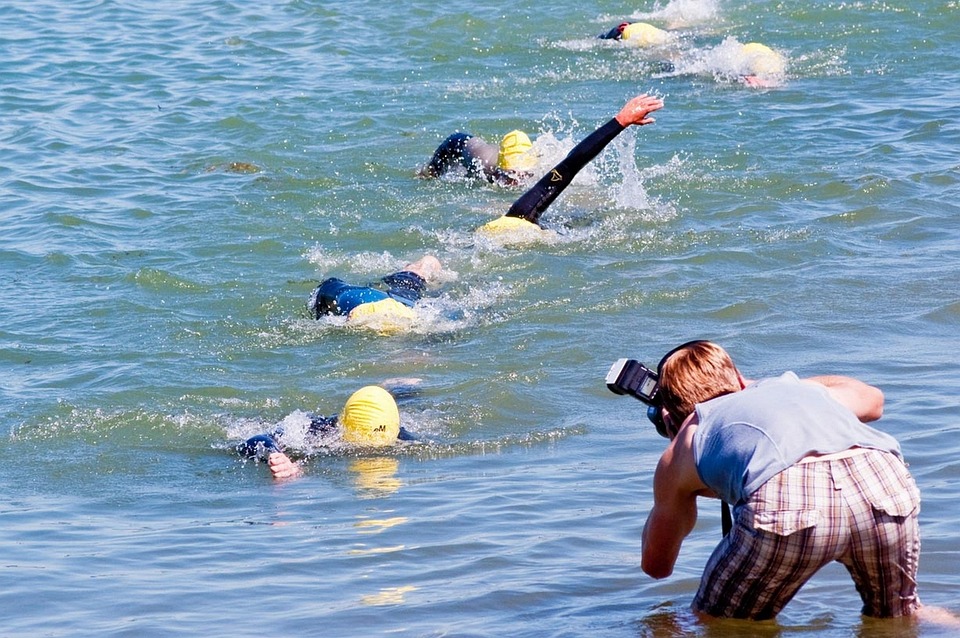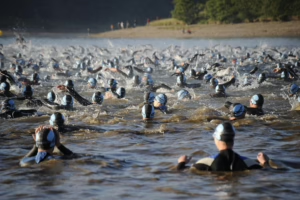Eco-Friendly Triathlons: Racing Towards a Greener Future
Introduction
In recent years, the growing awareness of environmental issues has permeated various aspects of our lives, including sports. The triathlon, a multi-sport race consisting of swimming, cycling, and running, is increasingly adopting eco-friendly practices. This shift is not merely a trend; rather, it reflects a broader commitment to sustainability within the athletic community. This article explores the principles of eco-friendly triathlons, their benefits, and examples of races leading the charge towards a greener future.
The Need for Sustainability in Sports
Environmental Impact of Traditional Events
Traditional sporting events often contribute significantly to environmental degradation. From carbon emissions linked to transportation to waste generated by participants and spectators, the footprint of triathlons can be substantial[^1]. Moreover, many triathlons take place in pristine natural environments, which can suffer from the influx of participants[^2].
The Role of Athletes
Athletes are increasingly aware of their impact on the environment, making sustainability a key priority. Many athletes, from elites to amateurs, are advocating for eco-friendly practices and driving change within the sport[^3].
Principles of Eco-Friendly Triathlons
1. Waste Reduction
One of the core principles of eco-friendly triathlons is minimizing waste. Events are rethinking their approach to various materials:
- Elimination of Single-Use Plastics: Organizers are transitioning to reusable cups and containers, offering alternatives like biodegradable products[^4].
- Recycling Stations: Strategically placed recycling stations help capture waste generated before, during, and after the event.
2. Sustainable Venues
Choosing venues that prioritize sustainability is essential. Many races now opt for locations that have already committed to eco-friendly practices, such as:
- Environmentally Conscious Facilities: Some venues utilize renewable energy sources or have implemented practices to minimize their carbon footprint[^5].
- Local Water Sources: To reduce transportation emissions, races utilize local water sources for aid stations.
3. Carbon Offsetting
Triathlon organizers are beginning to incorporate carbon offsetting practices into their events. Participants can contribute by supporting projects that counterbalance their carbon emissions, such as reforestation programs or renewable energy initiatives[^6].
4. Community Involvement
Engaging the local community is vital for the success of eco-friendly triathlons. This includes:
- Volunteer Programs: Encouraging local volunteers not only fosters community spirit but also reduces event costs and environmental impact.
- Educational Initiatives: Many races are incorporating workshops or displays to educate participants about sustainability[^7].
Benefits of Eco-Friendly Triathlons
1. Enhanced Athlete Experience
Athletes are increasingly seeking events that align with their values. Eco-friendly triathlons can enhance the overall experience by providing a sense of purpose. Participants in sustainable races often report higher satisfaction due to the commitment to environmental responsibility[^8].
2. Community Building
Eco-friendly events can strengthen the bonds within the local community by involving residents and local businesses. This inclusivity fosters a sense of pride and stewardship for the environment[^9].
3. Long-Term Viability
Sustainable practices contribute to the long-term viability of triathlons. As environmental concerns grow, races that prioritize eco-friendliness are more likely to attract participants and sponsors interested in supporting sustainable initiatives[^10].
Case Studies of Eco-Friendly Triathlons
1. Ironman Lake Tahoe
Ironman Lake Tahoe is known for its rugged natural setting and commitment to sustainability. The event has implemented numerous eco-friendly practices:
- Zero Waste Goal: They strive to divert 90% of waste from landfills through a comprehensive recycling and composting program[^11].
- Support for Local Economy: The event emphasizes partnerships with local vendors and farmers[^12].
2. Escape from Alcatraz Triathlon
The Escape from Alcatraz Triathlon has taken significant steps towards sustainability:
- Use of Eco-Friendly Products: The event partners with vendors that provide biodegradable products[^13].
- Conservation Efforts: Profits from the race are dedicated to local environmental projects, such as habitat restoration[^14].
3. World Triathlon Series (WTS)
The WTS has begun promoting sustainability across its global events:
- Eco-Friendly Transportation: Initiatives encourage participants to opt for public transport, hiking, or cycling to the event[^15].
- Green Certification: Some WTS events are pursuing green certifications to formalize their commitment to sustainability[^16].
Challenges and Criticisms
1. Implementation Costs
Adopting eco-friendly practices can be costly for race organizers, particularly for smaller events. Upfront investments in sustainable technologies and materials may deter some races from pursuing these initiatives[^17].
2. Resistance to Change
Some participants may resist changes associated with eco-friendly practices, particularly if they perceive that it compromises the quality of the event. This resistance can create friction between traditionalists and those advocating for sustainability[^18].
3. Lack of Awareness
A significant barrier to implementing eco-friendly triathlons is the lack of awareness among both organizers and participants about the importance and practicality of sustainable practices[^19].
Future Directions
1. Industry-Wide Standards
To foster a movement towards sustainability, industry-wide standards are necessary. Establishing guidelines for eco-friendly triathlons can aid race organizers in implementing sustainable practices[^20].
2. Innovative Technologies
As technology evolves, new solutions can enhance sustainability within triathlons. From carbon-neutral event management software to biodegradable race bibs, innovation will be crucial in propelling the movement forward[^21].
3. Educational Programs
Educating organizers and participants can bridge the gap between intention and action. Workshops, webinars, and resources focusing on sustainable practices will empower the triathlon community to take actionable steps toward eco-friendly events[^22].
Conclusion
The movement towards eco-friendly triathlons is not just a trend but a necessary evolution within the sport. As awareness of environmental issues continues to grow, the triathlon community has a unique opportunity to lead by example. By implementing sustainable practices and engaging participants, organizers can ensure that the thrill of racing is not at the expense of our planet. As the saying goes, "We do not inherit the Earth from our ancestors; we borrow it from our children." Embracing eco-friendly triathlons is a step towards returning the favor for future generations.
References
[^1]: Source discussing the environmental impact of sports events.[^2]: Study on the effects of sports events on natural environments.
[^3]: Data showing athlete advocacy for sustainable practices.
[^4]: Analysis of single-use plastic reduction in sports.
[^5]: Overview of sustainable venues.
[^6]: Explanation of carbon offsetting practices in events.
[^7]: Community engagement strategies for sports events.
[^8]: Surveys on athlete satisfaction and eco-friendly practices.
[^9]: Research on community benefits from sustainable events.
[^10]: Insights on long-term viability and sponsorship trends.
[^11]: Reporting on Ironman Lake Tahoe’s sustainability goals.
[^12]: Discussion of local economic support in events.
[^13]: Overview of eco-friendly products used in races.
[^14]: Details on environmental grant allocations from races.
[^15]: Transportation initiatives for triathlon events.
[^16]: Green certification standards for sports events.
[^17]: Examination of costs associated with sustainability in sports.
[^18]: Perspectives on resistance to eco-friendly changes.
[^19]: Studies on awareness levels in sports sustainability.
[^20]: Recommendations for industry standards.
[^21]: Innovations in sustainable technologies for triathlons.
[^22]: Programs and resources for educating event organizers.
This article serves as a comprehensive overview of how triathlons can implement environmentally sustainable practices while racing towards a greener future.


























Add Comment